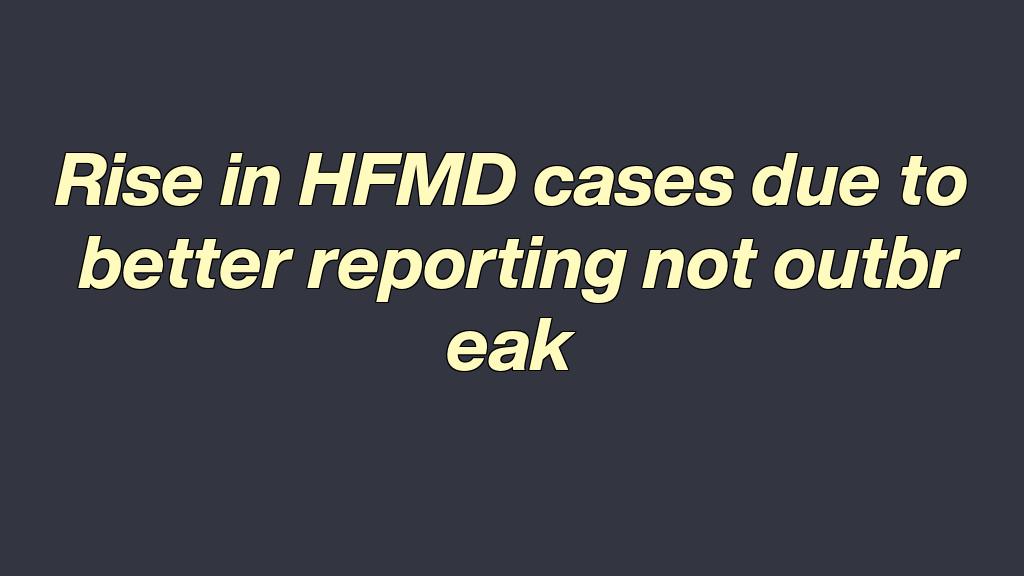THE Department of Health (DOH) on Monday said the recent spike in hand, foot, and mouth disease (HFMD) cases does not imply a dangerous outbreak but is a result of improved case reporting.

“We cannot call this an outbreak,” said DOH Assistant Secretary Albert Domingo, explaining that 94 percent of the logged cases are still considered “suspect” and are not yet laboratory-confirmed.
As of Aug. 9, the latest DOH data showed HFMD cases reaching 37,368 — over seven times higher than the 5,081 cases during the same period last year.
Despite the increase, Domingo emphasized that HFMD is not fatal and usually resolves within 7 to 10 days.
But DOH urged the public to remain cautious, especially during the wet season when transmission of the viral infection is more likely.
Rise in HFMD cases due to better reporting, not outbreak, This news data comes from:http://www.052298.com
HFMD spreads through saliva, respiratory droplets, and contaminated surfaces.
Rise in HFMD cases due to better reporting, not outbreak
Symptoms include fever, sore throat, rashes, and painful sores on the hands, feet, and inside the mouth.
In an earlier report, Health Secretary Ted Herbosa noted that the disease is highly contagious among children, because they spend more time indoors in the rainy season, making transmission easier.
While there is no specific cure, supportive treatment such as hydration, rest, and fever reducers can help patients recover faster.
- PH, Japan conduct search and rescue exercises
- President Marcos to attend 80th UN General Assembly in New York
- San Juan commemorates first revolution under Spanish rule in 129th Araw ng Pinaglabanan
- Head of main US health agency abruptly dismissed
- Australia to tackle deepfake nudes, online stalking
- Pakistanis no reprieve from floods yet
- DPWH seeks lookout bulletin vs officials, contractors in ghost projects
- Pope Leo: We must listen first before speaking
- Jollibee, DepEd partner to develop quick service restaurant curriculum for senior high
- NKorea accuses South of ‘serious provocation’